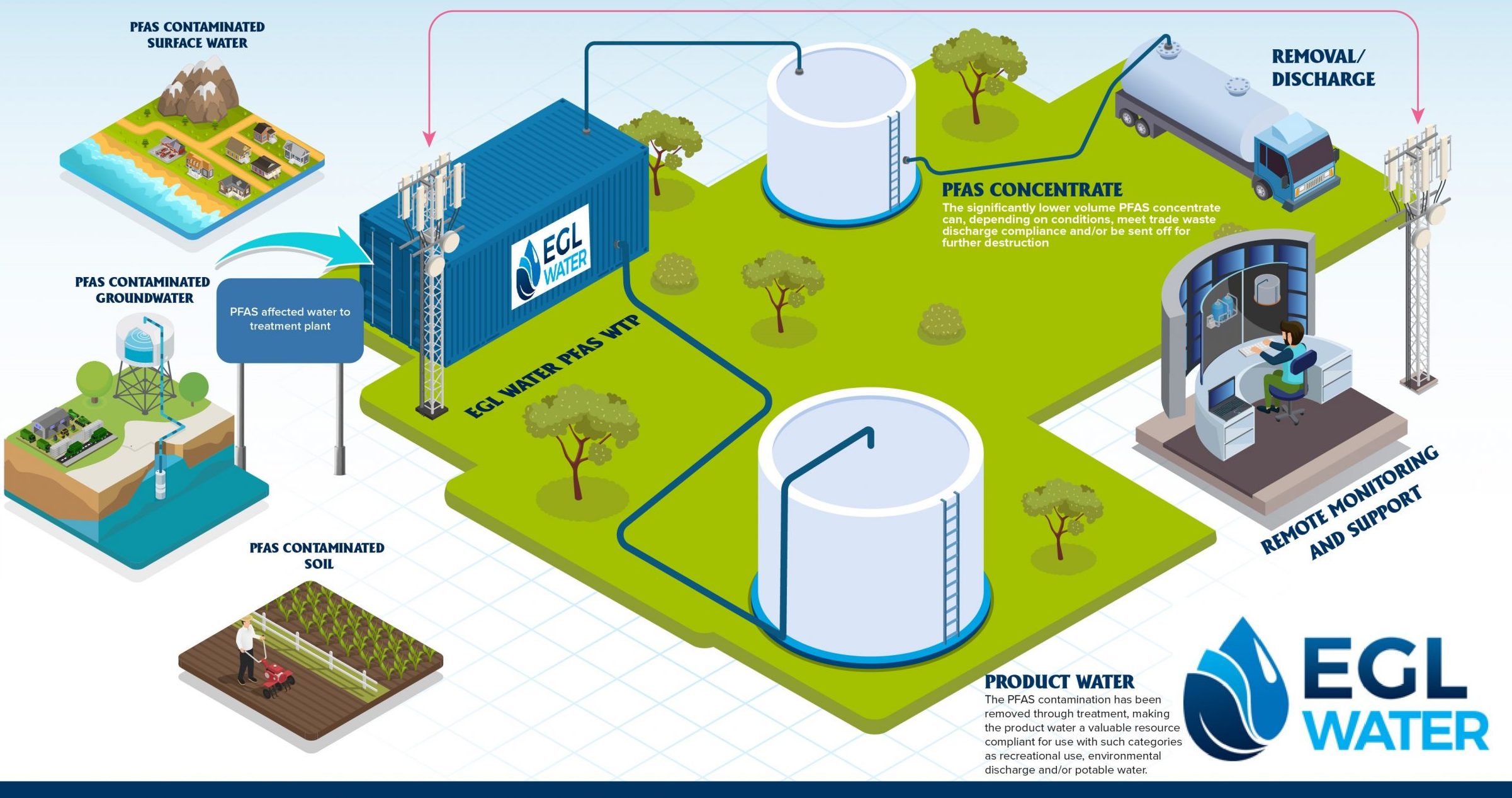Innovative PFAS Therapy Solutions for Safer Water
The boosting prevalence of PFAS contamination in water products necessitates a crucial examination of cutting-edge treatment remedies. Advanced filtering modern technologies and novel chemical therapies present encouraging opportunities for reducing these consistent pollutants. Furthermore, emerging bioremediation techniques offer an even more lasting method to tackling PFAS difficulties. As regulatory structures remain to adapt, understanding the performance and scalability of these options becomes vital. What implications do these innovations hold for public health and wellness and ecological remediation, and how can stakeholders effectively execute them in varied contexts?
Review of PFAS Contamination
PFAS contamination has become a considerable ecological and public wellness concern. Per- and polyfluoroalkyl compounds (PFAS) are a team of artificial chemicals recognized for their determination in the atmosphere and human body, leading them to be typically described as "for life chemicals." These substances have been widely used in various markets, consisting of firefighting foams, water-repellent textiles, and food product packaging, primarily as a result of their water- and grease-resistant residential properties.
The prevalent use of PFAS has actually led to their detection in soil, water supplies, and also in the blood of human beings and pets. Research studies have linked PFAS direct exposure to many health and wellness problems, including developing results in babies, immune system dysfunction, and numerous types of cancer. In addition, the ecological determination of these compounds complicates their degradation and elimination, elevating worries regarding long-lasting ecological impacts.
Governing bodies are significantly carrying out rigid guidelines to monitor and lower PFAS degrees in alcohol consumption water and various other environmental mediums. As recognition of PFAS contamination grows, it has actually ended up being necessary for neighborhoods and sectors to seek effective therapy options to mitigate direct exposure and protect public wellness.
Advanced Filtering Technologies
As the necessity to attend to PFAS contamination heightens, advanced filtering technologies have actually become a critical part in the remediation initiatives aimed at getting rid of these consistent chemicals from water resources. These technologies utilize advanced devices to efficiently target and record PFAS compounds, which are infamously resistant to standard treatment approaches.
One of one of the most promising techniques is making use of granular activated carbon (GAC), which adsorbs PFAS particles as a result of its high surface area and permeable structure. This approach has been widely applied in both community and commercial settings, showing substantial reductions in PFAS focus. In addition, ion exchange resins have gotten traction, especially created to selectively bind PFAS ions from water, therefore promoting their removal.
Membrane layer purification innovations, such as reverse osmosis and nanofiltration, additionally show efficiency in PFAS elimination by physically dividing pollutants from water - pfas management. These systems can attain high degrees of pureness, making them suitable for drinking water applications
Chemical Therapy Technologies
Numerous chemical treatment advancements are being discovered to efficiently attend to PFAS contamination in water supplies. One promising method includes making use of innovative oxidation procedures (AOPs), which utilize powerful oxidants such as ozone, hydrogen peroxide, or chlorine dioxide combined with UV light to damage down PFAS substances right into much less harmful Resources substances. This technique has demonstrated efficacy in laboratory settings, showing potential for scalability in real-world applications.
An additional cutting-edge approach is the growth of ion-exchange materials specifically developed to target PFAS. These resins can precisely adsorb PFAS compounds from water, enabling for their removal throughout treatment processes. Recent improvements have improved the efficiency and ability of these materials, making them a favorable alternative for water treatment centers.
In addition, researchers are investigating using chemical agents like persulfate and ferrous ions to enhance the destruction of PFAS in polluted water. These representatives can cause chain reaction that promote the malfunction of consistent PFAS substances.
Emerging Bioremediation Techniques
Current developments in chemical therapy developments have led the way for checking out bioremediation methods as a viable choice for attending to PFAS contamination. Bioremediation utilizes the all-natural metabolic processes of bacteria to degrade or change pollutants, making it an enticing technique for taking on consistent contaminants like PFAS.
Emerging strategies in bioremediation include using genetically crafted bacteria that can especially target and damage down PFAS compounds. These microbial stress are being developed for their improved destruction capabilities, boosting the efficiency of the remediation procedure. In addition, researchers are examining the possibility of plant-assisted bioremediation, where certain plant types might uptake and sequester PFAS from contaminated soil and water.
An additional promising method is the application of bioaugmentation, which entails introducing useful microbes into infected environments to increase the destruction of PFAS. This approach can help with quicker removal timelines and improve general performance.

Regulative Structures and Criteria
A thorough regulatory framework is essential for efficiently handling PFAS contamination and making certain public health security. The raising recognition of per- and polyfluoroalkyl substances (PFAS) as environmental contaminants has actually motivated various federal and state companies to establish criteria that control their presence in water supplies. The U.S. Environmental Protection Company (EPA) has actually established health advisories and is pursuing setting enforceable restrictions for PFAS in alcohol consumption water.
State-level regulations differ dramatically, with some states taking on more stringent standards than those recommended by the EPA. These regulations often consist of optimum impurity degrees (MCLs) for certain PFAS substances, tracking needs, and reporting obligations for water utilities. Additionally, Continued emerging structures concentrate on the removal of infected websites, emphasizing the demand for reliable treatment innovations.

Conclusion
In final thought, the advancement and application of ingenious PFAS treatment services are important for dealing with the pervasive issue of water contamination. Advanced purification modern technologies, chemical therapies, and arising bioremediation strategies jointly present a multifaceted technique to properly lower and deteriorate PFAS degrees. As regulative frameworks proceed to progress, integrating these technologies will certainly be necessary to protect public wellness and recover the integrity of infected water sources, ultimately adding to a cleaner and safer setting.
Comments on “PFAS Treatment in Surface Water”